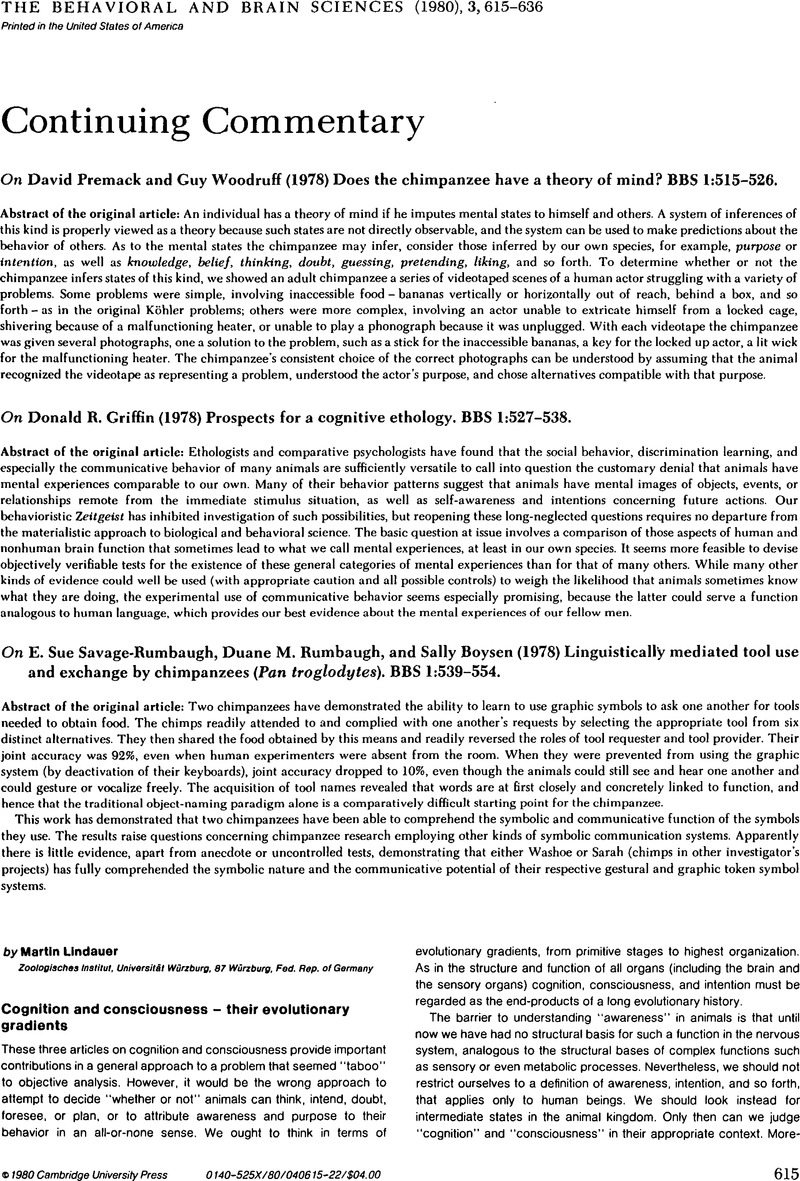Crossref Citations
This article has been cited by the following publications. This list is generated based on data provided by Crossref.
Premack, David
1985.
“Gavagai!” or the future history of the animal language controversy.
Cognition,
Vol. 19,
Issue. 3,
p.
207.


